Isabelle Poulin, Robert Kahn, Evelyne Thoizet
Poétiques du récit d’enfance : Walter Benjamin, Enfance berlinoise vers 1900 ; Vladimir Nabokov, Autres rivages ; Nathalie Sarraute, Enfance
Paris: Atlande, 2012
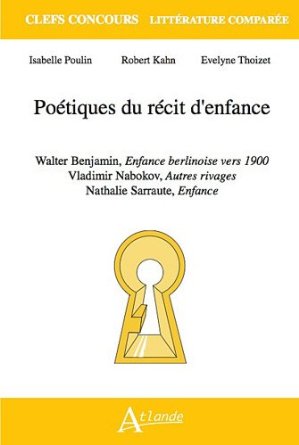
Isabelle Poulin, Robert Kahn, Evelyne Thoizet
Poétiques du récit d’enfance : Walter Benjamin, Enfance berlinoise vers 1900 ; Vladimir Nabokov, Autres rivages ; Nathalie Sarraute, Enfance
Paris: Atlande, 2012

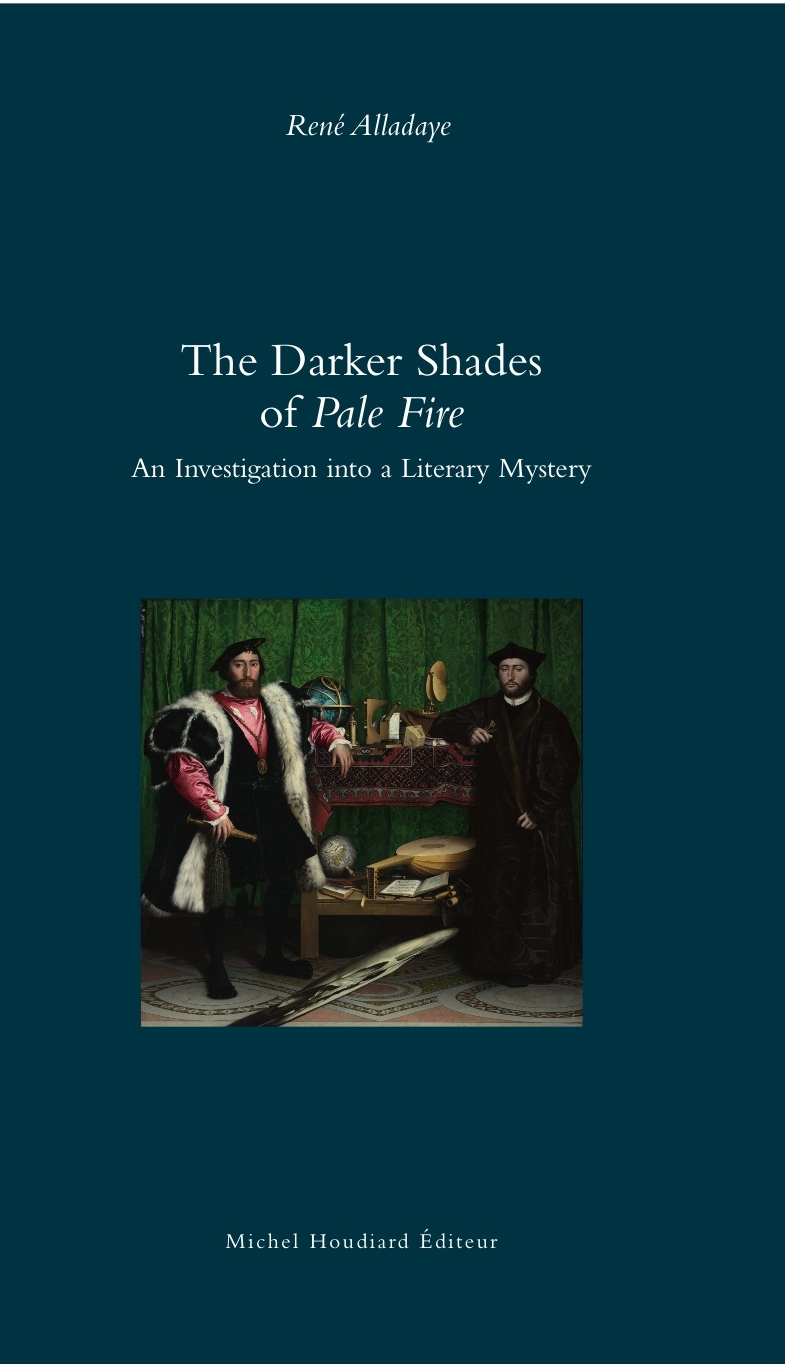
Half a century after its publication, Pale Fire, one of Vladimir Nabokov’s most brilliant achievements, remains a literary mystery. Despite the richness of its critical history and the ingenuity of two generations of readers, the ongoing debate about its narrative structure and the identity of its narrator(s) still has not reached a definitive conclusion. This study chronicles the major stages of the novel’s reception, from Mary McCarthy’s groundbreaking review to Brian Boyd’s striking metaphysical interpretation, and offers a critical assessment of the various theories put forward to account for the text’s intricacies. This systematic analysis, which follows in the footsteps of Pierre Bayard and combines the methods of “detective criticism” with the use of the basic tools provided by narratology, leads to the refutation of a number of views and approaches to the novel, and induces a new exegesis resting on the central role played by a famous painting. The re-examination of the Pale Fire case generates a surprising solution to the novel’s puzzle.
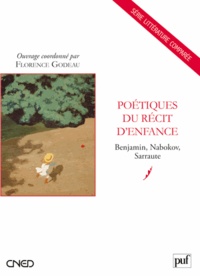
“Enfance berlinoise (Walter Benjamin), Autres rivages (Vladimir Nabokov) et Enfance (Nathalie Sarraute) rassemblent des textes autobiographiques évoquant la période charnière de l’histoire européenne s’étalant de 1900 aux années 1930. Le parcours existentiel, intellectuel et sensible de chacun des trois auteurs prend sa source dans l’expérience de l’exil et de la séparation. À la croisée de l’histoire et d’itinéraires individuels s’esquissent les images mémorielles de capitales culturelles mythiques, telles Berlin, Saint-Pétersbourg ou Paris. D’un train à l’autre, mais aussi au coeur de la ville où l’enfant se fraie ses propres passages, la circulation du souvenir autorise un témoignage essentiel. Parce qu’ils sont aussi expériences de la perte et tentatives de reconstruction, à travers une écriture qui joue et louvoie entre les langues, ces récits d’enfance excèdent à l’évidence les frontières du « sujet autobiographique » et s’ouvrent à d’autres partages. S’appuyant sur des analyses claires et précises du corpus au programme de l’agrégation de lettres, le présent volume étudie les « poétiques » plurielles dans des récits d’enfance étroitement liés à une période cruciale de l’histoire du XXe siècle.”
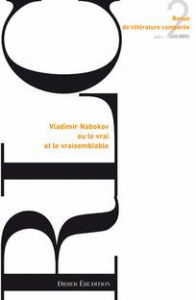
Isabelle Poulin • Avant-propos
Articles
Elizabeth Klosty Beaujour • Devenir Nabokov
Maria Malikova • Le poète fantôme parisien Vassili Chichkov et les poèmes avérés de Vladimir Nabokov
Laurence Guy • L’original perdu de Nabokov, ou pourquoi le russe était « une bonne langue “de départ” mais une horrible langue “d’arrivée” »
Marie Bouchet • Les mots étrangers de Vladimir Nabokov, une propriété privée
Stanislas Gauthier • Une oeuvre trilingue peut-elle être originale ?
Isabelle Poulin • L’enfance de l’art. Portrait de l’écrivain en « premier homme » seul dans les langues
Une nouvelle association consacrée à Vladimir Nabokov
La Provence consacre un article (cf. ci-après) au court-métrage réalisé par Anne-Marie Lafont, vice-présidente des Chercheurs Enchantés, avec ses élèves de Première, et qui est une adaptation de Roi, Dame, Valet de Vladimir Nabokov.
Erratum: la journaliste a indiqué dans son article que Anne-Marie Lafont est présidente de l’association, alors qu’elle en est la vice-présidente.
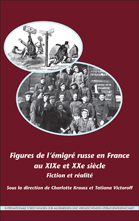
Le présent ouvrage donne une vue d’ensemble des recherches actuelles consacrées à l’émigration russe en France. Il ose une approche nouvelle en confrontant les émigrés russes réels, dont de nombreux écrivains et poètes russes transitant par la France ou s’y installant, aux figures fictionnelles reflétant les retentissements de ces flux migratoires dans l’imaginaire du pays d’accueil. Le choix inhabituel d’une période très longue, du début du XIXe siècle à nos jours, permet de suivre les continuités et les évolutions, des migrations passagères et cas individuels sous le régime tsariste aux différentes vagues de l’émigration après la Révolution russe. Le recueil se compose d’une trentaine d’articles rédigés par des chercheurs internationaux, spécialistes de littératures russe, française et comparée. Leurs contributions, qui rendent compte de la complexité du phénomène, sont accompagnées de plusieurs témoignages ainsi que de nombreuses illustrations permettant de visualiser aussi bien la réalité que la fiction de l’émigration russe en France.C. Krauss et T. Victoroff (dir.), Figures de l”émigré russe en France au XIXème et XXème siècle, Rodopi, 2012. EAN13 : 9789042034778. Amsterdam / New York : Rodopi, 2012, 525 p. 105,00 EUR
Dans ce volume, un article, écrit par Agnès Edel-Roy, vice-présidente des Chercheurs Enchantés, est consacré à la réception de Vladimir Nabokov en France dans les années trente du vingtième siècle et à
Mademoiselle O, nouvelle écrite en français en 1936, quand l’écrivain émigré russe mit à l’épreuve de la langue française la possibilité de devenir un écrivain français.Agnès Edel-Roy : : « L’au-delà nabokovien de l’exil français », p. 311-329.
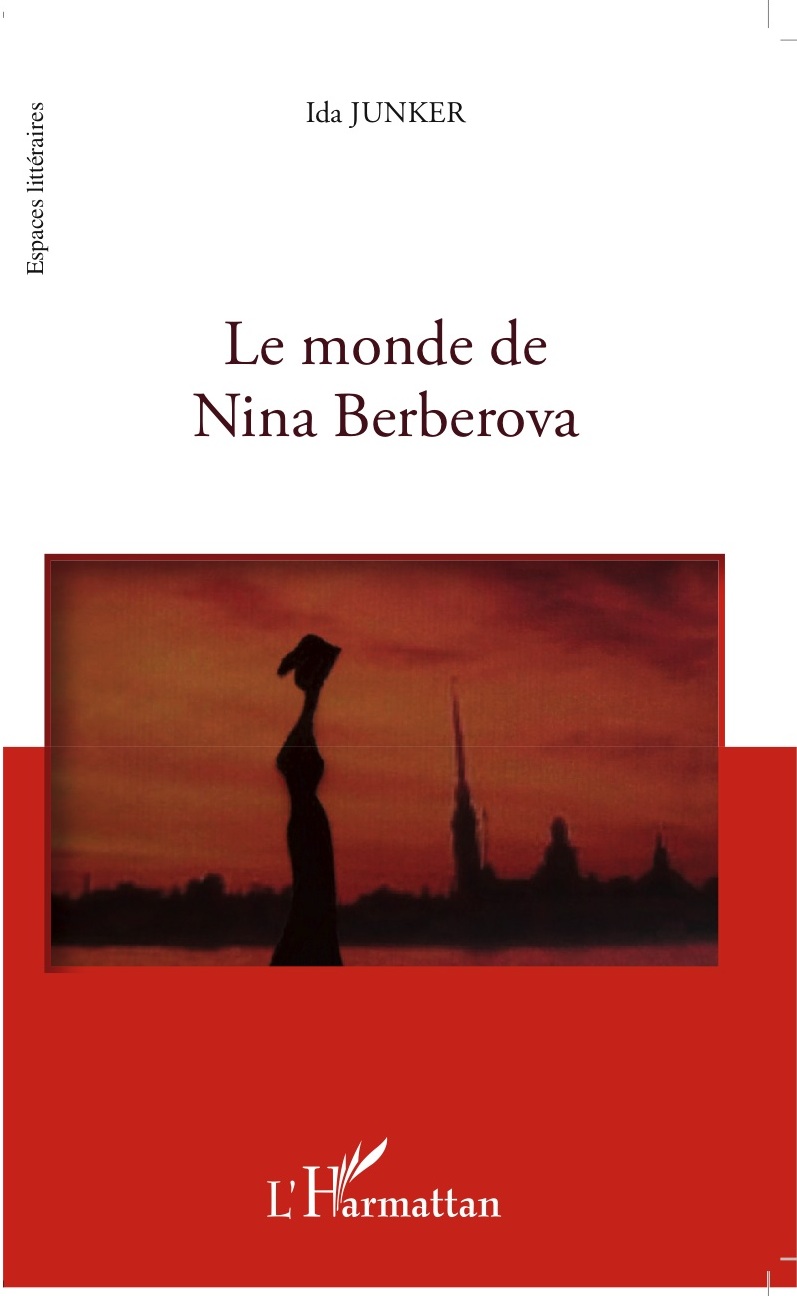
Paris, L’Harmattan, 2012, 298 p.
“Avec Vladimir Nabokov, Nina Berberova (1901-1993) est l’un des auteurs de la première vague de l’émigration russe les plus connus en France. En paraphrasant Lamartine, on pourrait dire qu’elle représente, aux yeux de ses lecteurs, un « siècle fait femme ». Lors du long périple qui la conduit de Saint-Pétersbourg à Philadelphie, en passant par Paris et New York, elle en devient témoin de tous les grands événements : la révolution d’octobre, les deux guerres mondiales, la chute du mur de Berlin et la fin du régime communiste.L’ouvrage d’Ida Junker est le premier essai qui analyse l’œuvre prosaïque, poétique et dramatique de cet auteur russe dans son intégralité. L’un de ses chapitres est consacré aux liens unissant Berberova et Nabokov qui, dans les débats littéraires des années trente, représentent « la jeune génération » de l’émigration.
Les points communs de leurs destins sautent aux yeux : non seulement ils sont nés dans la même ville avec deux ans d’écart, mais aussi dans la même rue, Bolchaïa Morskaïa, comme Berberova le souligne dans une note de son autobiographie. Tous les deux sont des poètes lyriques avant de passer, dans les années vingt, aux longs poèmes et aux récits, et enfin aux romans. Ainsi presque simultanément, ils trouvent le registre épique comme le plus adapté pour écrire sur l’exil. Cependant, ils n’abandonneront jamais la poésie.
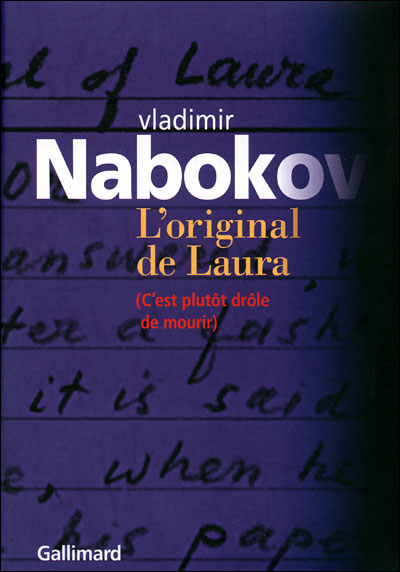
“Texte inachevé composé dans la souffrance et la perspective d’une mort prochaine, L’Original de Laura présente l’ébauche d’un enchevêtrement de récits. L’auteur de Lolita reprend ici certains des éléments qui ont fait le succès de son plus célèbre roman. Flora n’est certes pas une nymphette, mais elle ressemble à s’y méprendre à une Lolita qui ne serait pas morte dans les neiges de l’Alaska. Capricieuse, frivole, elle épouse un homme beaucoup plus âgé qu’elle, un professeur de psychologie appliquée, mais collectionne ouvertement les amants ; l’un d’eux la prend pour modèle d’une de ses héroïnes, Laura, dans un roman où figure aussi en bonne place le mari vieillissant. Celui-ci, harcelé par la souffrance, s’ingénie, au moyen de certains exercices, à s’effacer, à se gommer mentalement. L’auteur, dont les exigences esthétiques étaient très élevées, nous permet malgré lui, de percevoir à distance, entre les lignes, entre les fiches, l’ultime souffle d’un romancier de génie.” Maurice Couturier
Vladimir Nabokov, L’original de Laura (C’est plutôt drôle de mourir), traduction Maurice Couturier, Paris, Gallimard 2010.
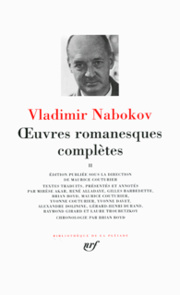
“Ce volume marque un tournant. Il contient, d’une part, deux romans écrits en russe à la fin des années 1930 : Le Don, le plus magistral des livres russes de Nabokov, et L’Enchanteur, où apparaît la première «nymphette» nabokovienne et qui ne fut publié qu’en 1986, dans la traduction anglaise due au fils de l’écrivain. Il réunit, d’autre part, les trois premiers romans que Nabokov composa en anglais et un livre qui, pour n’être pas le plus connu de son auteur, n’en est pas moins un chef-d’œuvre : l’autobiographie Autres rivages, dont le point de départ date des années 1930 ; il s’agissait alors d’un texte en français sur la gouvernante du petit Vladimir, mais il fut entièrement recomposé en anglais avant de paraître en 1951. Période charnière, donc, qui voit la naissance et, avec Lolita, la consécration d’un écrivain de langue anglaise. L’accouchement, qui est aussi un arrachement, ne se fit pas sans douleur. Le changement de terre, le changement de langue, l’ombre menaçante des totalitarismes confèrent aux livres de cette période une particulière intensité tragique. Plusieurs textes évoquent la perte (notamment La Vraie Vie de Sebastian Knight, dont le héros est un écrivain) et ce que le latin nomme desiderium : désir, besoin, regret. Il faut renoncer à l’enfance, aux amours anciennes, à la littérature russe (véritable héroïne du Don), à toutes « ces choses que le destin empaqueta un jour, pêle-mêle, et jeta à la mer ». Mais Nabokov, à vrai dire, n’y renonce pas. Il les métamorphose et les rend inoubliables.”
Couturier, Maurice, Direction des Œuvres romanesques complètes de V. Nabokov, vol. II, Paris, Gallimard, bibliothèque de la Pléiade, 2010.
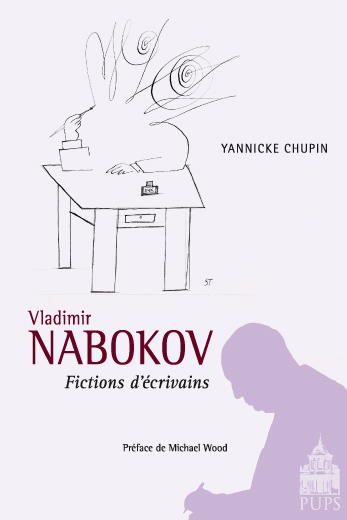
“Des premières nouvelles publiées en russe à son dernier roman en langue anglaise, Vladimir Nabokov a mis en scène une centaine de personnages d’écrivains : universitaires, poètes, romanciers, biographes ou autobiographes. Pourquoi écrivent‑ils ? Qu’est-ce qui les prédispose à devenir écrivains ? Après avoir esquissé une typologie sociologique, ontologique et esthétique de ces figures d’écrivains, ce livre se concentre sur leur étude à travers les narrateurs de trois romans majeurs de Nabokov : Humbert Humbert dans Lolita, Kinbote dans Feu pâle et Van Veen dans Ada ou l’Ardeur, et montre la façon dont ces trois personnages naissent et s’épanouissent sous nos yeux grâce à la plume que leur créateur leur a prêtée le temps d’un roman. L’ouvrage inclut un Who’s Who des écrivains dans la fiction de Nabokov et des illustrations provenant des archives Vladimir Nabokov conservées à la Berg Collection de la New York Public Library, dont un document inédit.”
Chupin, Yannicke, Vladimir Nabokov, Fictions d’écrivains, préface de Michael Wood, Paris, Presses de l’Université Paris-Sorbonne, 2009.